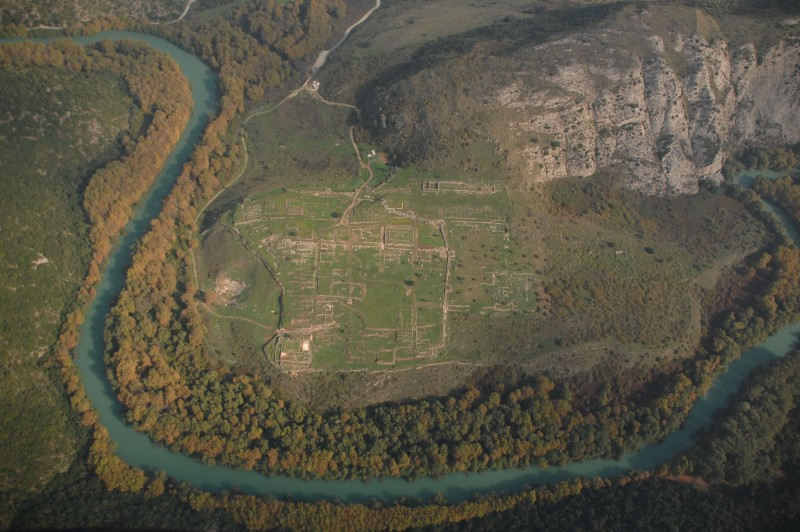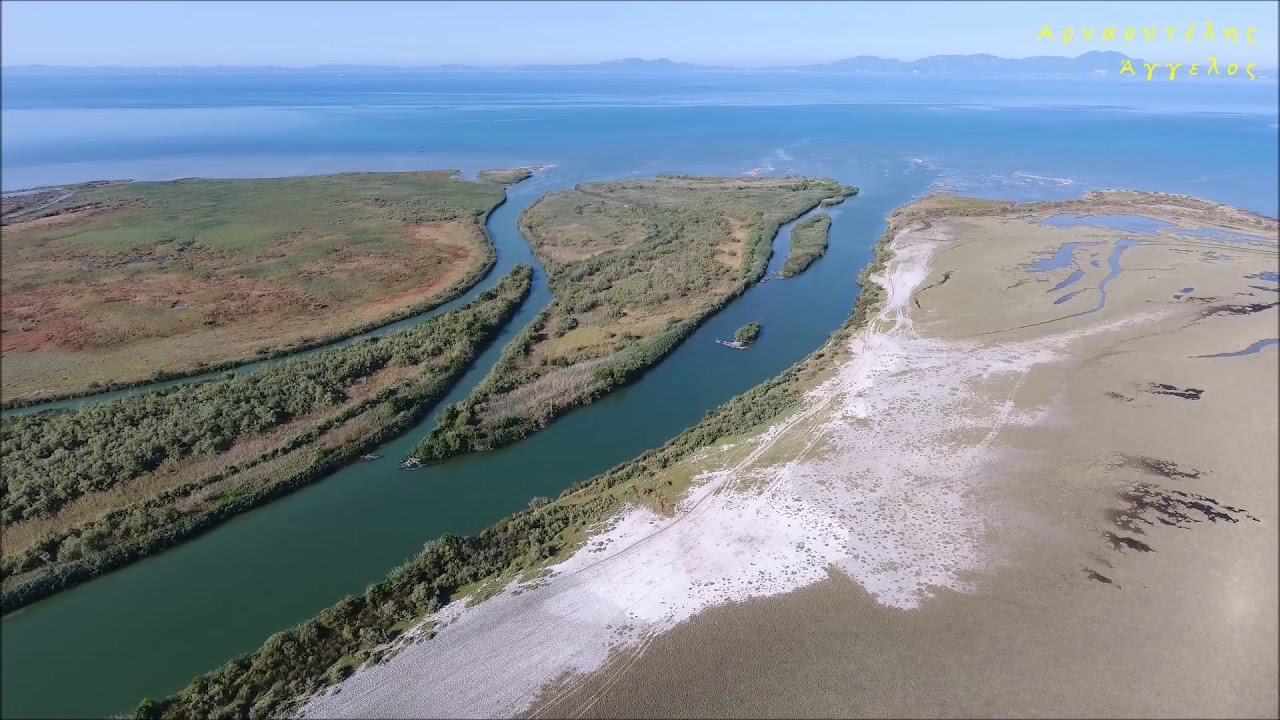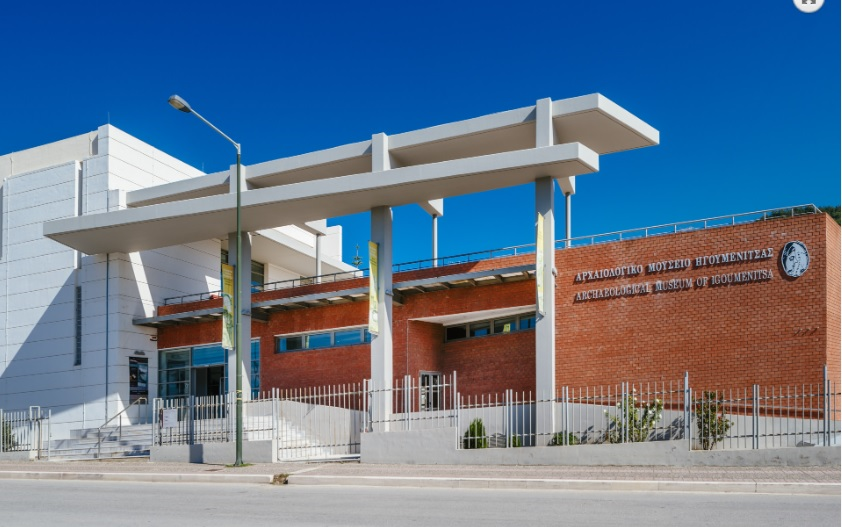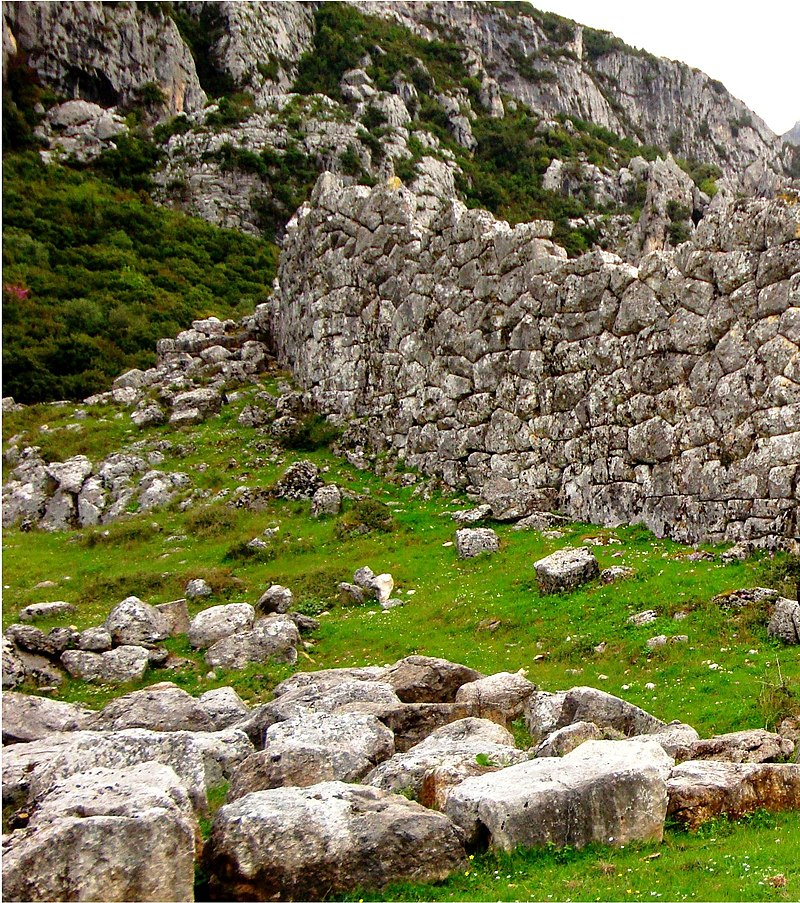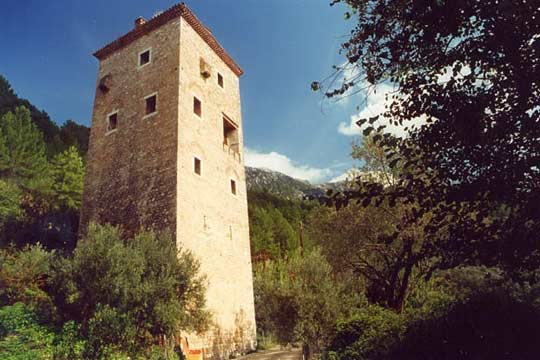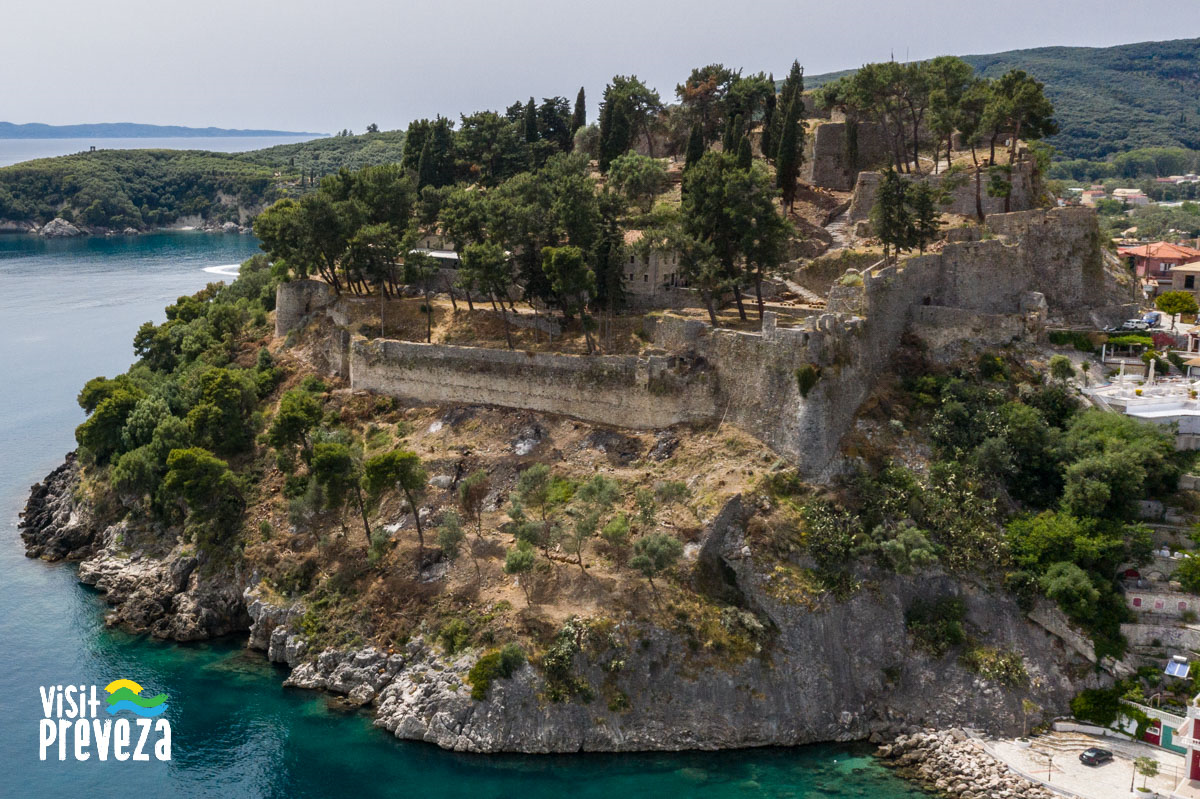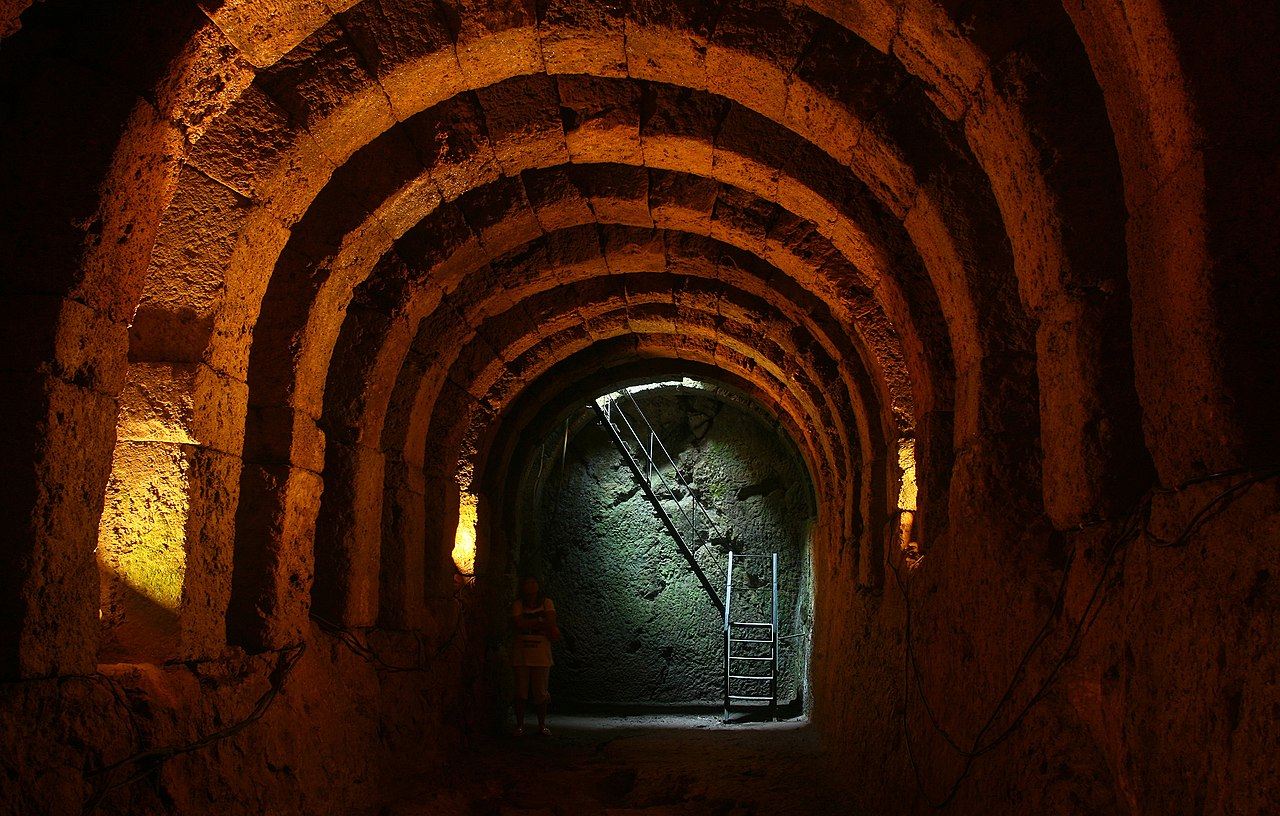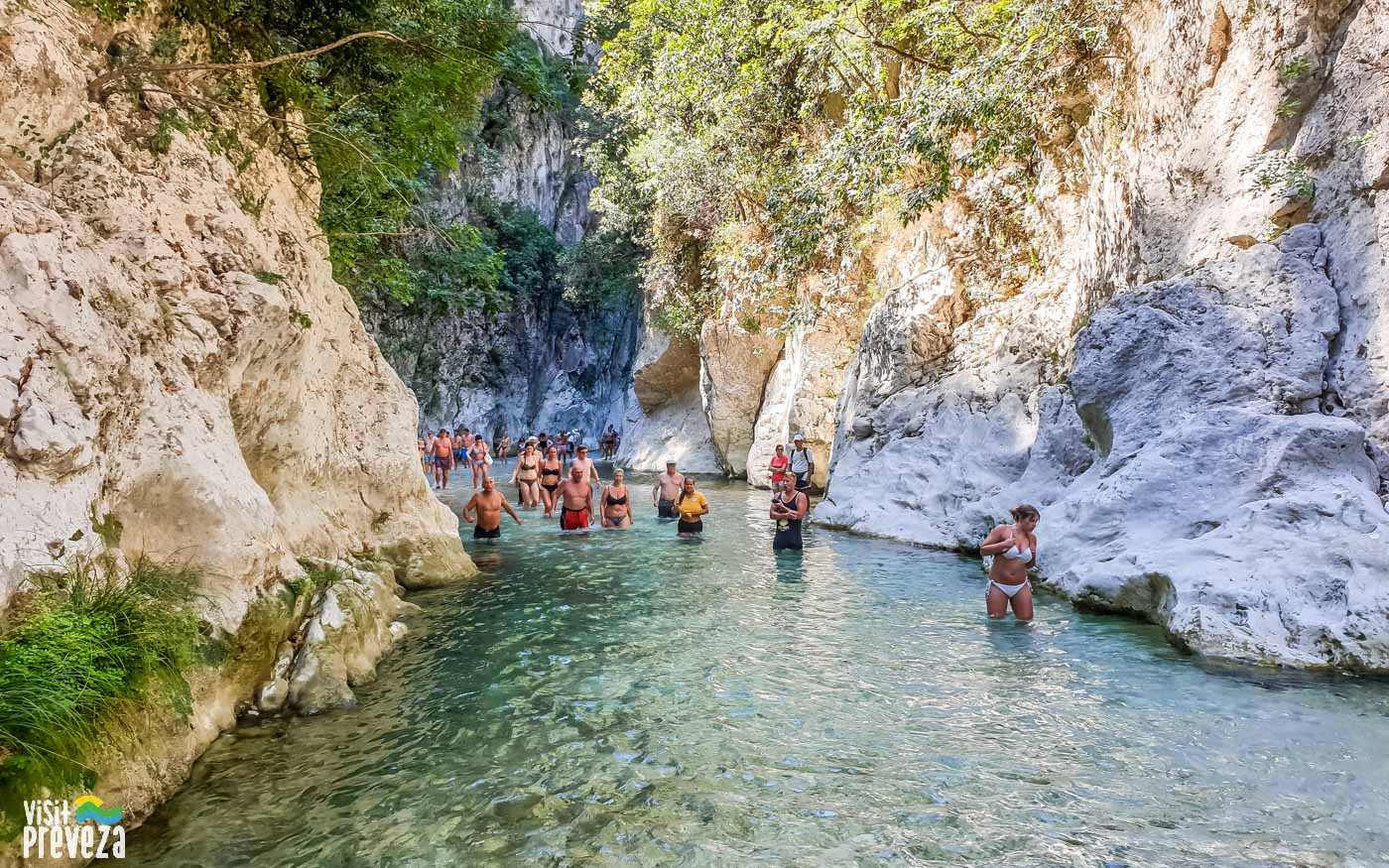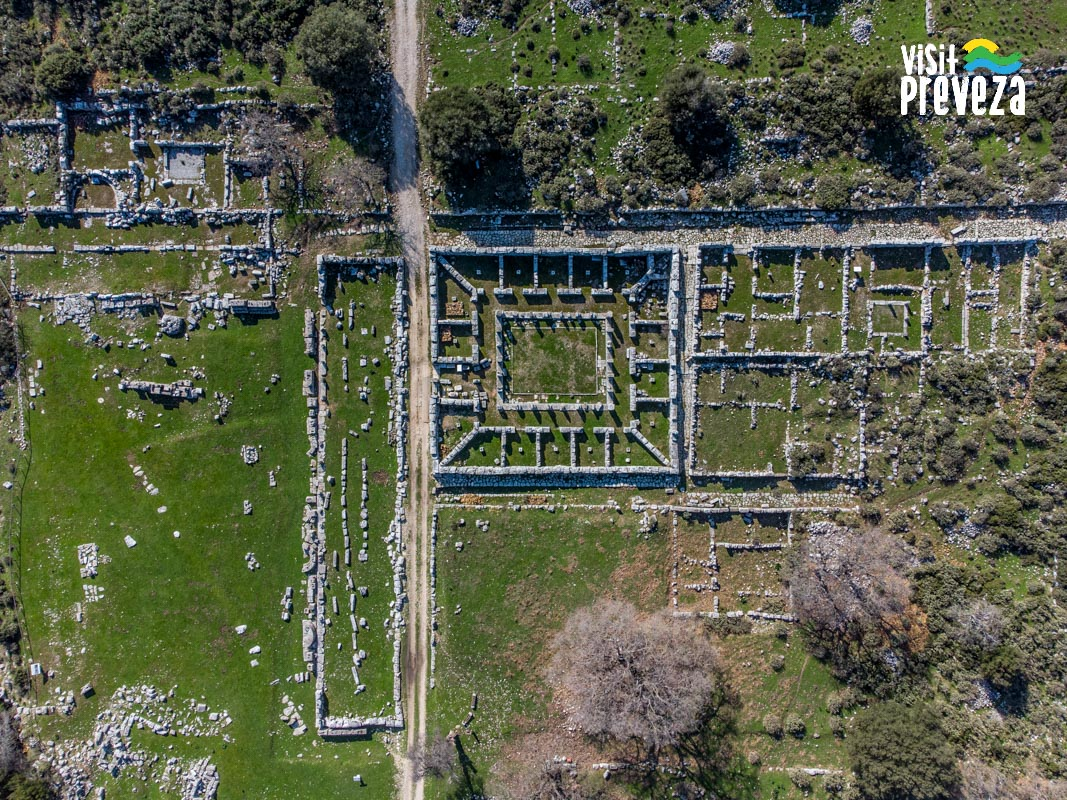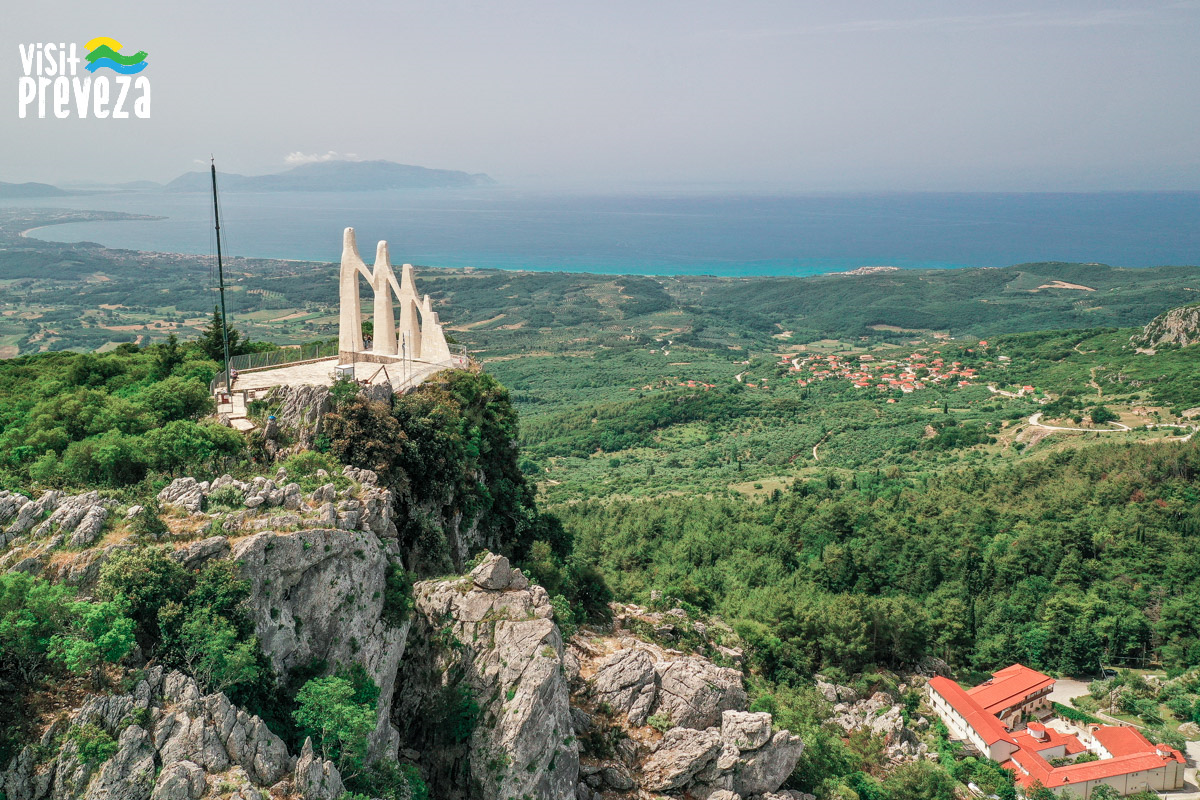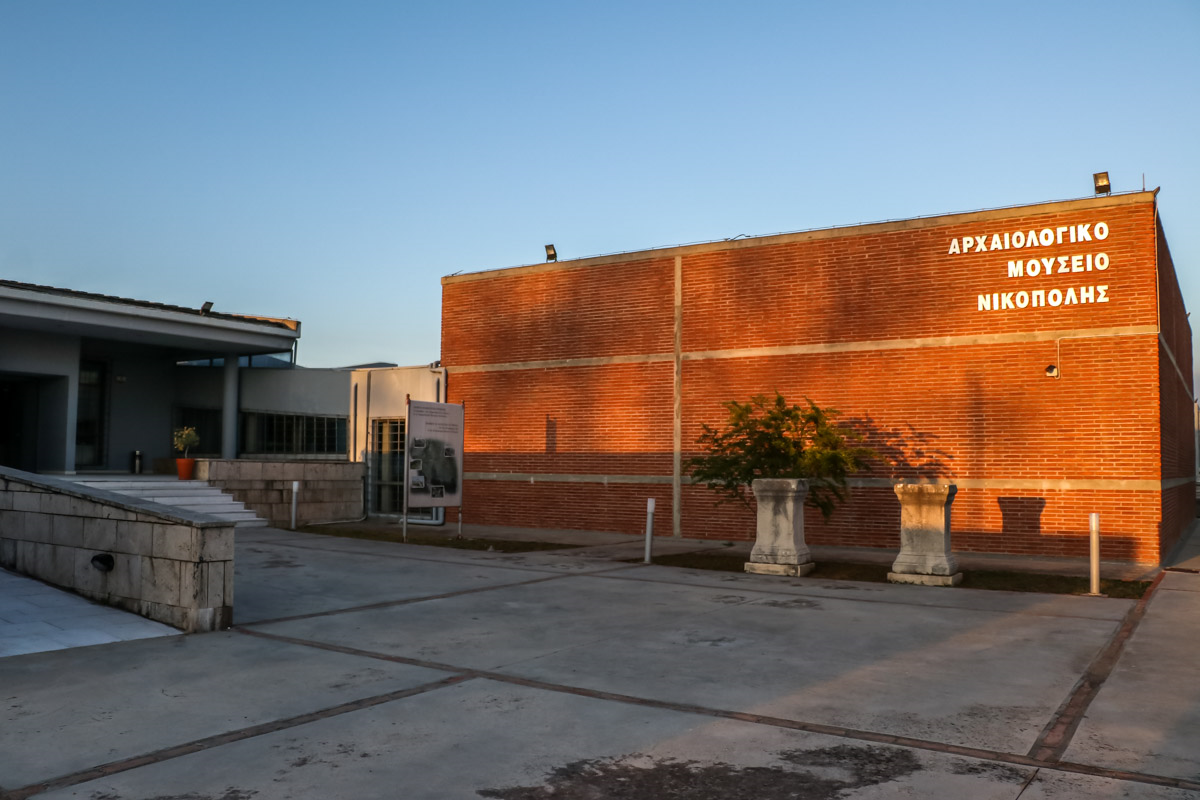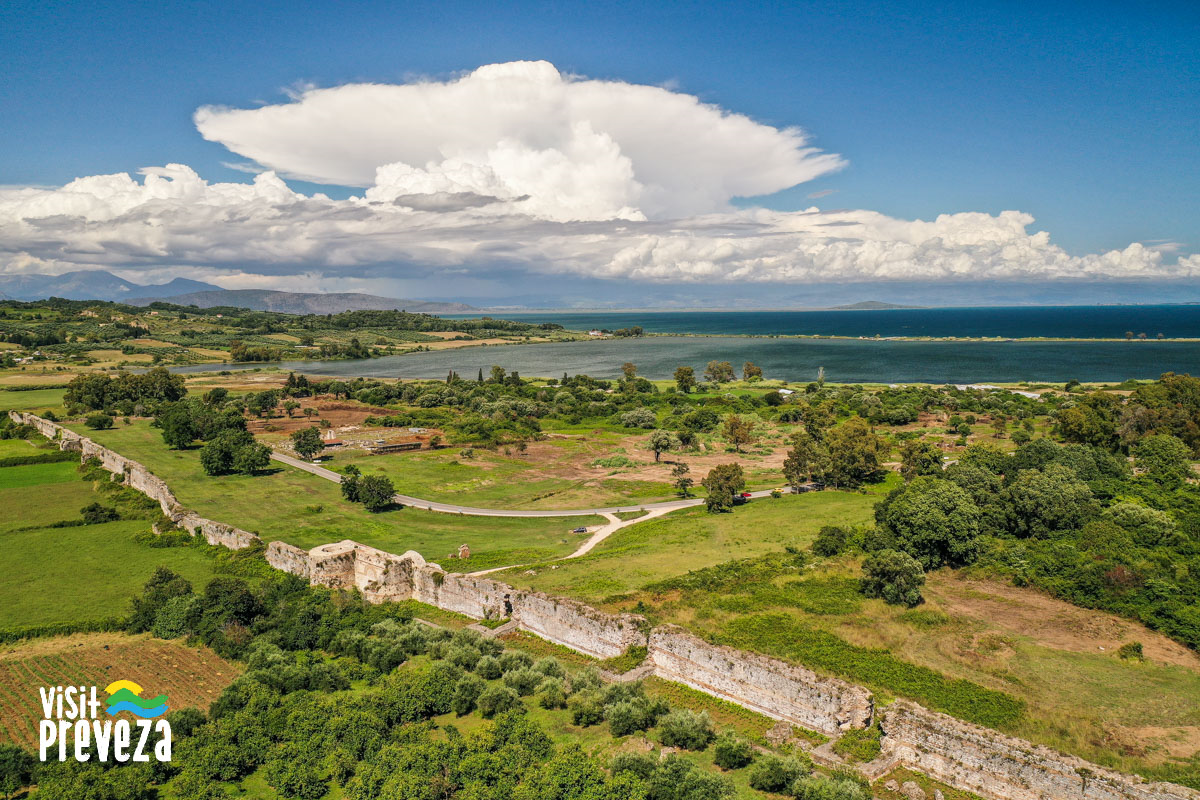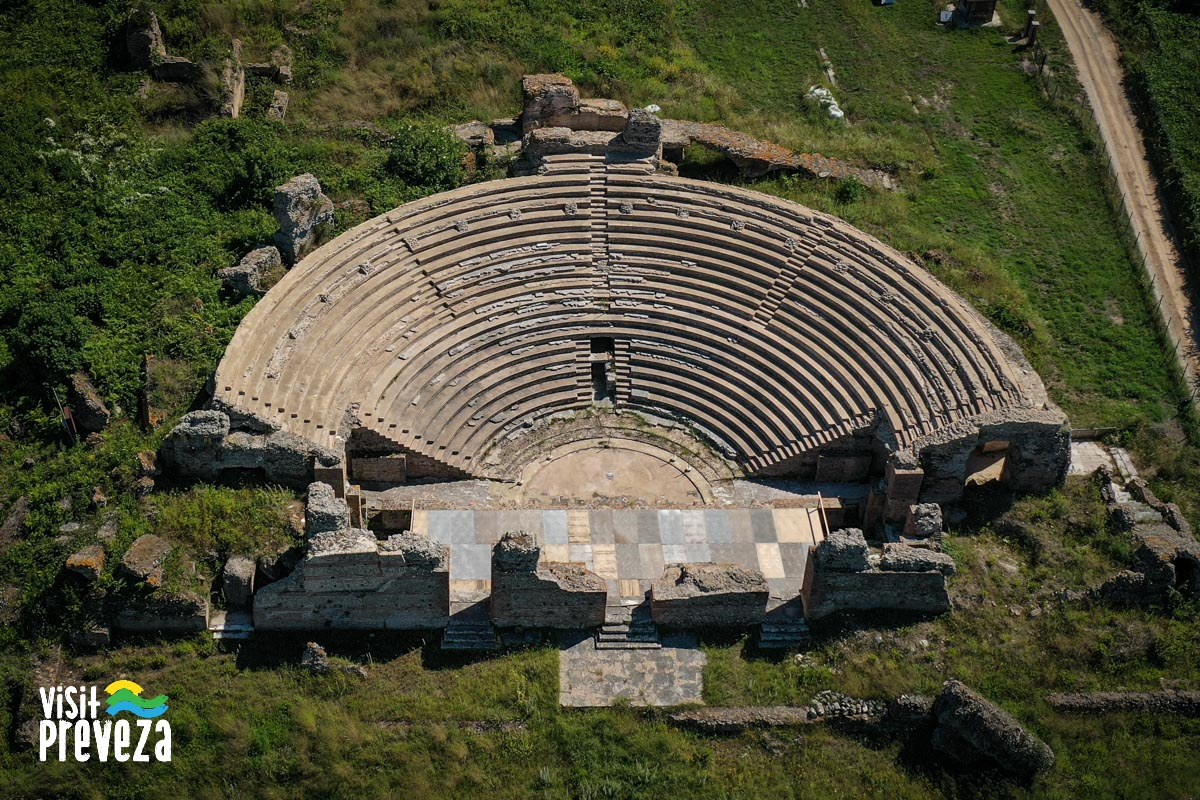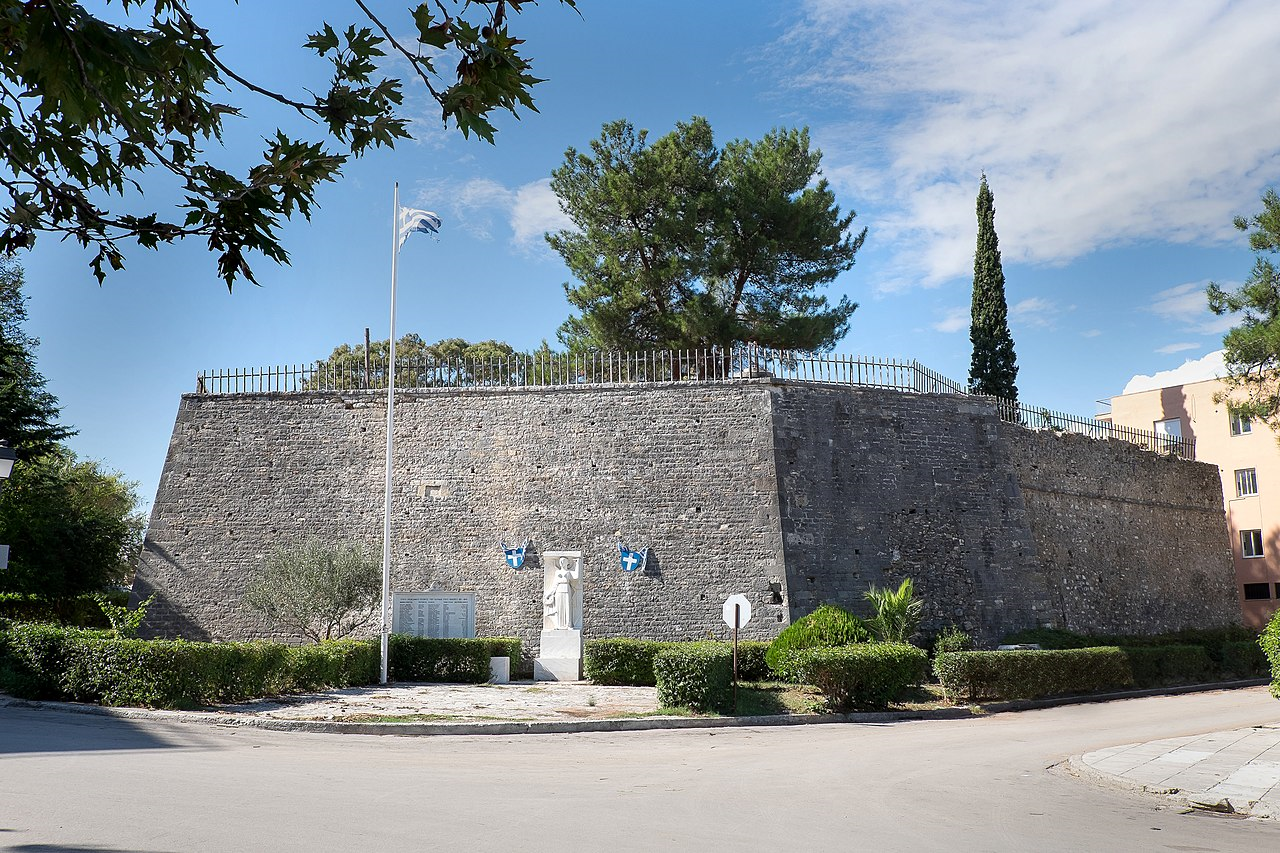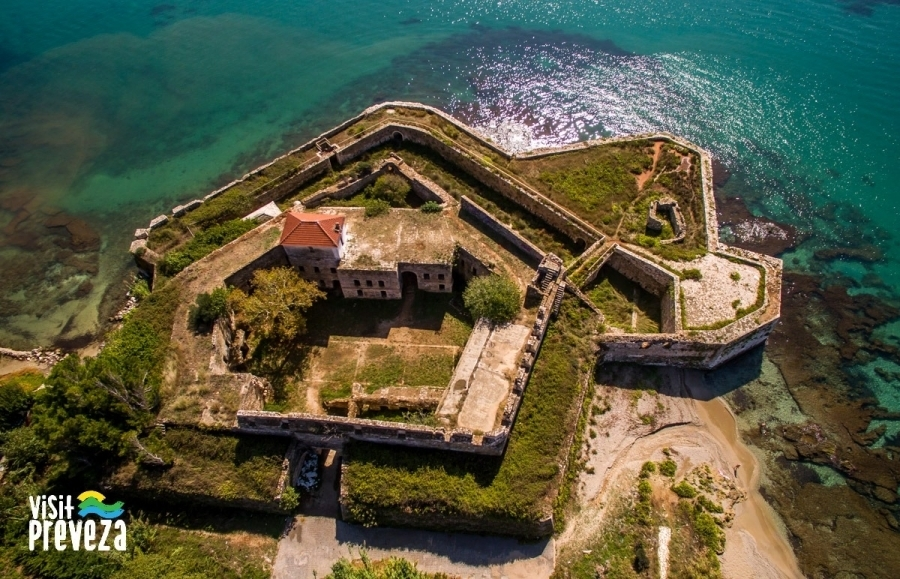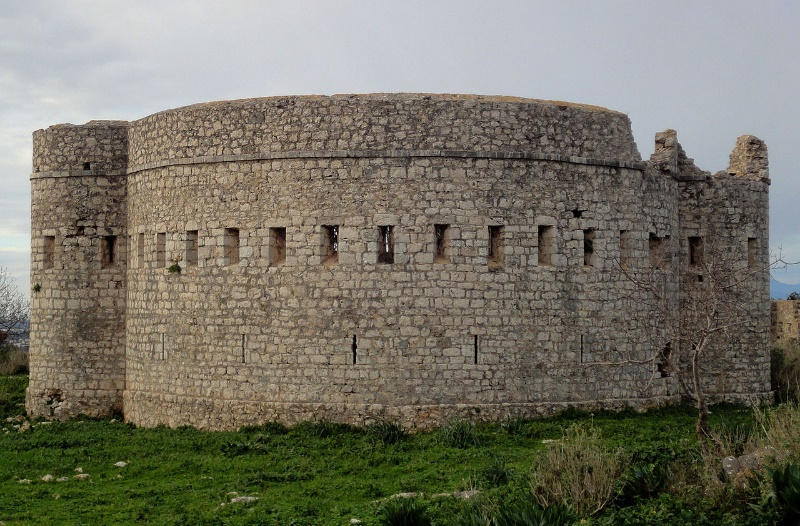Cultural and nature Route of Ancient Paths of Epirus
This coastside route, includes a tour in some of the most spectacular cultural and natural sights of Thesprotia and Preveza. The tour combines the cultural sightseeing with low intensive athletic activities in natural attractions.
1. Sagiada’s port- Archaeological area of Gitana/Kalama’s estuaries
With starting point the Sagiada’s port, by a rented bus or car, you can visit the archaeological area of Gitana and its theater.
The archaeological site of Gitana extends in the southwest slope of the mountain of Vrysella, in the conjunction of the Kalpakiotikos stream with the Kalamas river (ancient Thyamis). Gitana was a cultural center and capital of the Common of Thesprotoi from its foundation, during the second half of 4th century B.C., till its occupation from the Romans in 167 B.C. The existence of Gitana town, is witnessed from fillings, inscriptions and literary tradition, while the accurate name (Gitana) is confirmed by a bronze dedicated inscription from excavations held in the “Small Temple” of the settlement.
Moreover, with starting point the Sagiada’s port, by a rented bus or car, you can visit the Kalama’s estuaries.
The Kalamas river crosses the region of Thesprotia from east to west, till it pours in the Ionian Sea. There it forms the famous river delta and a unique landscape that is described as fairytale and mysterious.
The region is easily accessible and in a short distance from Igoumenitsa town.
The landscape is a favorite for nature lovers and children, and you can find a certified guide to organize your excursion.
2. Igoumenitsa- Archaeological Museum of Igoumenitsa
From the Igoumenitsa’s port, you can reach in a short distance by foot the archaeological museum of Igoumenitsa.
The Archaeological Museum of Igoumenitsa is a modern regional museum that operates since 2009 in a new building in the north town’s entry, opposite from the Technical University and the municipal stadium. It is under the jurisdiction of the Ephorate of Antiquities of Thesprotia.
The permanent collection of the museum with the title “Thesproton Land”, covers the archaeological periods from the Paleolithic era (100.000 years ago) till the Ottoman occupation era (19th century), and represents through selected findings and rich side material, the most important historical periods and the diversity of Thesprotia’s archaeological past.
The interest is focused on the Hellenistic era, a period of high prosperity and particularly representative of the Epirus region. The exhibits derive from systematic excavations, that took place in the entirety of the Region of Thesprotia, and highlight various manifestations of human life in each era.
3. Plataria’s Marina- Archaeological area of Elea & Tower of Bolonatoi
From Plataria’s marina, by a rented bus or car, in one hour of driving, you can visit the archaeological area of Elea.
The fortified settlement of Elea, is an area of 105 hectares, in a natural fortified plateau in the foot of the mountains of Paramythia, with an altitude of 500 m. The identification of the ruins with the reported from ancient sources of the town of Elea was made by the professor and researcher of epirotic history, Sotiri Daskari.
The Elea’s territory, the ancient Eleatida, occupies the valley of Kokytou, that was extending from the northwest of Paramythia till the estuaries of Acherontas in the Ammoudia Bay, near the Necromancy of Acherontas.
The settlement was founded just before the mids of the 4th century B.C. and for some decades it was the center of the Common of Thesprotoi. The town is thriving during the Hellenistic time (3rd till 2nd cent. B.C.) and was destroyed in 167 B.C. by the roman legions of Paul Aimilianus.
Afterwards, in a 10 minutes’ drive, you can visit Paramythia and visit the “Koulia of Bolonaton” and also find a place to eat.
In the foot of the castle of Saint Donatos in the northwest of the town of Paramythia, in the neighborhood of “Proniatika” is placed “Koulia”, famous as “Koulia of Bolonaton”.
“Koulia” is a tower- fortified house, that each owner could supervise the entire plain of Paramythia and the surrounding area. It dates back in the second half of 18th century till the beginning of the 19th century. It belongs to the construction of fortified towers and this architecture is known in Epirus and Albania during the Ottoman occupation. It is one of the best maintained fortified towers in northwest Greece.
4. Valtos Port - Parga’s Castle
From the Valtos Port, in a short distance by foot, you can visit the Parga’s castle is a medieval castle in the peak of Parga in Epirus. It rests in the peak of a hill with view to the town. It was an important landmark of the 15th century, in part due to its powerful fortifications that were used for protection against land and sea raids.
The Enetians created a perfect defensive plan that together with its natural fortification, made it unconquerable. Outside the castle, eight towers in different locations complemented its defense. Inside the narrow space of acropolis, there were stacked up 400 houses. The faucet of “Kremasma” supplied with water the tanks of the castle and its houses. For supplies, the castle was using two bays: Valtos and Pogonia. The castle of Parga was impenetrable in the entire administrative period of Ali Pasha and it supported the Souliotes resistance.
The Parga castle is accessible through narrow streets and stairs from the port of Parga and also there is a paved street that reaches the Valtos beach.
5. Kerentza port - Acherontas Necromancy & Acherontas River
With starting point the Kerentza’s port, by a rented bus or car, you can visit the Acherontas Necromancy in 15 minutes.
The ancient Necromancy of Acherontas lies in the Mesopotamos village, of the region of Preveza, in a place that according to Homer “river Acherontas meets Kokyto and Pyriflegethonta, in the northwest coast of Acherousia lake, where the soul world entry is”. The necromancy in built in the top of the hill, and visitors reached it from the Chimerio Peninsula in the Ammoudia village. The visitors wanted to communicate with the souls of the favorite dead. Homer in Odyssey, describes analytically the region during the descent of Odysseys in Hades.
After the drying of Acherousia lake in the 50’s, the whole geography of the area has changed and what remaings is the conjuction of Acherontas river with Vovou river, just near the Necromancy hill.
From Acherontas Necromancy, by a rented bus or car you can visit Glyki, and the Acherontas river, in half an hour.
The Acherontas river is a nature miracle, shaping a magnificent route and a out of the world canyon in the foot of Paramythia’s and Souli’s mountains.The visitor can enjoy the cold and crystal-clear waters of the Acherontas mythical river, experiencing alternative tourism, as nowhere else in Greece. From the “Acherontas Canyon”, that starts from the Serziana beach till the “Skala Tzavelainas”, the river creates small ponds and lakes, while in other places the river is raging, surrounded by large boulders and steep slopes. The canyon is identified with the mythical and archaeological term “Hades Gates”. Near the Vouvopotamos village of Parga’s Municipality, we find “Acherontas Springs”, while the river pours in the Ionian Sea, in Ammoudia village.
6. Kastrosykia’s port - Archaeological Area of Cassopi & Zaloggo Monument
With starting point the Kastrosykia’s port, by a rented bus or car, you can visit the archaeological area of Cassopi, in half an hour.
The archaeological site of Cassopi is placed in the hills of current village of Kamarina of the Municipality of Preveza. The town was founded by the Cassopaians, an epirotic tribe of Thesprotoi, and probably later was colonized from Ilians & Arcadians.
The foundation of the town was due to a cluster of small settlements in the area. One scenario is that the locals wanted to protect the fertile valley of the western part of Regional Unit of Preveza from the aspirations of the Ilians settlers.
From Cassopi, you can visit the Zaloggo monument by foot, in 10 minutes.
The Zaloggo monument is a monument complex in the Regional Unit of Preveza, in the settlement of Kamarina in the Municipality of Preveza. It was designed by the sculptor Giorgo Zoggolopoulo, while its metallic mockup lies also in the garden of the Presidential Mansion of Athens.
7. Mytica’s port - Archaeological Museum and area of Nicopolis
With starting point the Mytica’s port, by a rented bus or car, you can visit the archaeological area of Nicopolis, in 15 minutes.
The archaeological Museum of Nicopolis is in the 5th km of national road of Preveza-Ioannina near the archaeological site of Nicopolis. It was completed in 2009 and is administrated by the Ephorate of Antiquities of Preveza. A museological study took place and the exhibits were placed classified in chronological series. The museum includes a collection of architecture parts in Nicopolis area, a collection of sculptures, bounties from the cemetery of the area of Nicopolis.
The building has a total area of 2.150 m2, and you can find it in the Suburbs of Preveza town. It consists of two main exhibition spaces, 200m2 each, a venue for multiple of uses, administration spaces, spaces for accommodating visitors (ticket kiosk e.t.c).
From the archaeological museum of Nicopolis, by a rented bus or car, you can visit the archaeological area of Nicopolis in 10 minutes.
The ancient Nicopolis was an epirotic town, founded by the Romans in the southwest Epirus, near the current town of Preveza. According to studies of Konstantinou Zachou its population is calculated around 150.000. The population that was forced to colonize the town, derived from the surrounding towns of Thesprotia, Preveza, Arta and Acarnania.
The archaeological area is currently one of the largest in area, ancient town of Greece. The ancient Nicopolis is placed exactly next to the current homonym village, in the narrowest point of the isthmus of the Preveza peninsula, adequately protected by law in regard with construction, and it is visitable.
In different points of the archaeological area, restoration & highlighting works take place. In the last decade the town’s walls, the Stadium, the two Basilicas of Alkisonos & Doumetio were cleared and restored.
In the season 2006-2009, the Augustus monument was excavated and restored.
In the season 2012-2013, after the Diazoma initiative, the west fate of the old Christian walls and the Octavian Theater are restored.
8. Preveza’s Marina - The castles
You can visit its lots of cultural attractions in the center and in the vicinity of the town such as the castle of Saint Andreas, the castle of Pantocrator, the castle of Saint George, the castle of Laskaras and more.
With starting point the Preveza’s marina, by a 10-minute walk, you can visit the castle of Saint Andreas (Its Kale) is in the north side of the Preveza town. Its spectacular walls were built by Ottomans in the beginning of 17th century, while they were repaired again by the Venetians.
It is the biggest from the six (6) castles that remain in the region of Preveza. It has three distinct construction phases, that suit each different historical period of the town.
The first phase is combined with the surrender of the town, in 1701, from the Enetians to the Ottomans, and its rapid fortification from its new conqueror.
The second phase id identified with the 80-year long occupation of the town (1718-1797) from the Venetians, and the fortifications improvements that made it a castle.
The third phase is characterized by Ali Pasa presence in Preveza and the extensive fortifications of the period 1807-1808, under the supervision of the Christian architect, Petros from Korytsa. Especially, Ali Pasha has fortified the castle with perimeter walls, moat and three gates.
The castle today is in excellent state, while its sloped walls and its particular geometry, impress all its guests.
With starting point the Preveza’s Marina, by a rented bus or car, you can visit the Pantocrator Castle, in fifteen minutes.
The Pantocrator castle was built in the beginning of 19th century from Ali Pasha, according to plans of the French Engineer Yadocourt. It is one of the many fortificaitons of Preveza, in the entry of the strait that unites the Ionian Sea with Amvrakikos Bay.
It has the shape of a pentagon, with high walls and embrasure towards the coast. Today it hosts lots of cultural activities.
With starting point the Preveza’s Marina, by a rented bus or car, you can visit the Saint George Castle, in ten minutes. The castle of Saint George, or Geni Kale or Chizir Kalesi, is one of the four large fortifications, that remain inside the urban fabric of Preveza. The castle was built in 1807 from Ali Pasha, under the supervision of military French Engineers.
With starting point the Preveza’s Marina, by a rented bus or car, you can visit the Laskara’s Tower, in twenty minutes. The Tower of Laskaras is a fortification of the last Ottoman period. It was built in 1860 and is placed in the top of the “Tourkovouni” hill in the peninsula of Laskaras, in an altitude of 100 m.
label_galleria
